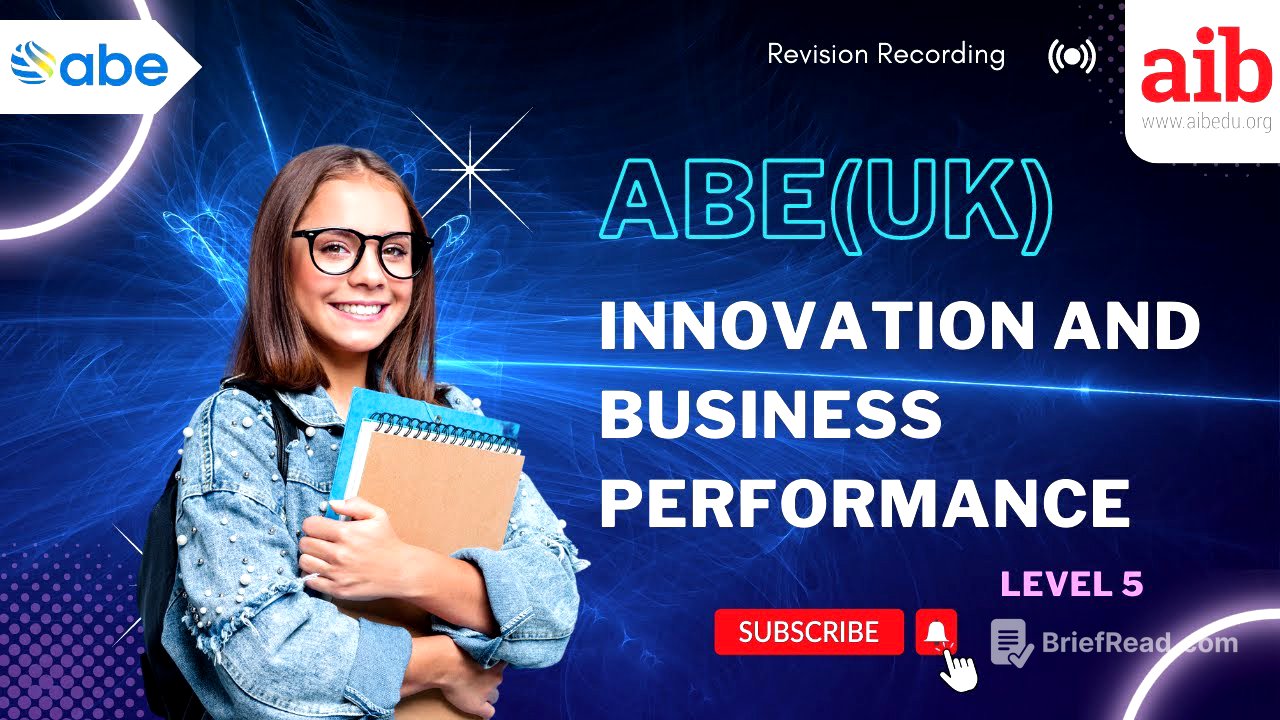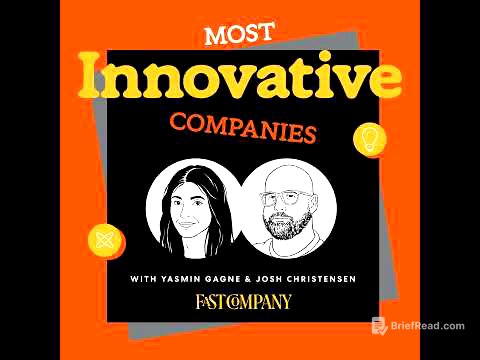TLDR;
This video provides guidance on how to approach an open-book exam, focusing on organisational summaries, performance measurement techniques, innovation, and legal/ethical considerations. It uses Coca-Cola as an example to illustrate key concepts and provides a structured approach to answering each question effectively.
- Choose a well-known multinational organisation for readily available information.
- Structure answers with definitions, benefits, and relevant examples.
- Relate theoretical concepts to the chosen organisation to demonstrate understanding.
- Address legal and ethical issues that may impact innovation performance.
Organisational Summary [0:13]
The organisational summary should include background information on a well-known multinational organisation operating in several countries. This approach ensures information is readily available and relevant scenarios can be discussed. The summary should include the organisation's name, its origins, where it operates, and its size. For example, Coca-Cola, an American corporation founded in 1892, operates in over 200 countries with more than 2,800 products, making it one of the largest beverage manufacturers globally. The summary should also mention main markets and examples of products/services, such as soft drinks and vitamin water, as well as key competitors like Pepsi. The summary should be around 200 words, following the guidelines provided.
Performance Measurement Techniques [6:03]
When discussing performance measurement techniques, start with a definition of performance management, explaining what it is, why it's used, and how it's applied. Include a few benefits of performance management. Then, relate these techniques to the chosen organisation. For Coca-Cola, useful performance measurements include financial ratios, which analyse financial status and operating results to understand development prospects. For example, Coca-Cola can use financial ratios to calculate revenue, profitability, costs, and growth, comparing results with previous periods to measure performance. A balanced scorecard, including operational measures on customer satisfaction, internal processes, and innovation, can also be used. Benchmarking against competitors like Pepsi or internal departments can help improve business performance. KPIs such as number of customers, average sales, and customer satisfaction can also be used to measure performance.
Innovation and Application of Innovation Change [15:53]
To analyse innovation, first define the concept and mention types of innovation, such as radical and incremental. Explain how innovation helps businesses. Then, describe how the chosen organisation, like Coca-Cola, has used these innovation types. This includes process innovation (manufacturing and distribution), product innovation (introducing new types of drinks), position innovation (making products available online and in supermarkets), and paradigm innovation (positioning the product in the minds of customers as an energy or healthy drink). Address each of the four "Ps" separately, relating them to the company.
Assessment of an Innovative Organisation [19:15]
Assess whether the chosen organisation can be defined as innovative by stating the innovative things it has done. For example, Coca-Cola is constantly transforming its portfolio by reducing sugar and bringing innovative products to market, which is product innovation. They also seek to positively impact communities through water replenishment and sustainable sourcing, which can be seen as paradigm innovation. The Coca-Cola Freestyle mobile app is a position innovation. The company's management undertakes innovation by partnering with Nestle to produce tea-based drinks, also a product innovation. Explain the characteristics of an innovative organisation, such as continuous innovation, unique and relevant strategy, market leadership, empowerment and trust, team collaboration, and willingness to try and fail, and whether the organisation meets these characteristics.
Legal and Ethical Issues [25:58]
Discuss the legal and ethical issues that might cause risks to the innovation performance of the chosen organisation. For Coca-Cola, these issues include the pressure to create new ventures with constraints and limitations when entering new markets due to legal constraints and environmental concerns. Health concerns related to high sugar content in Coca-Cola products raise ethical issues. Regulations and food safety concerns also act as risks to innovation performance. These factors can affect the organisation's ability to innovate and expand into new markets.









